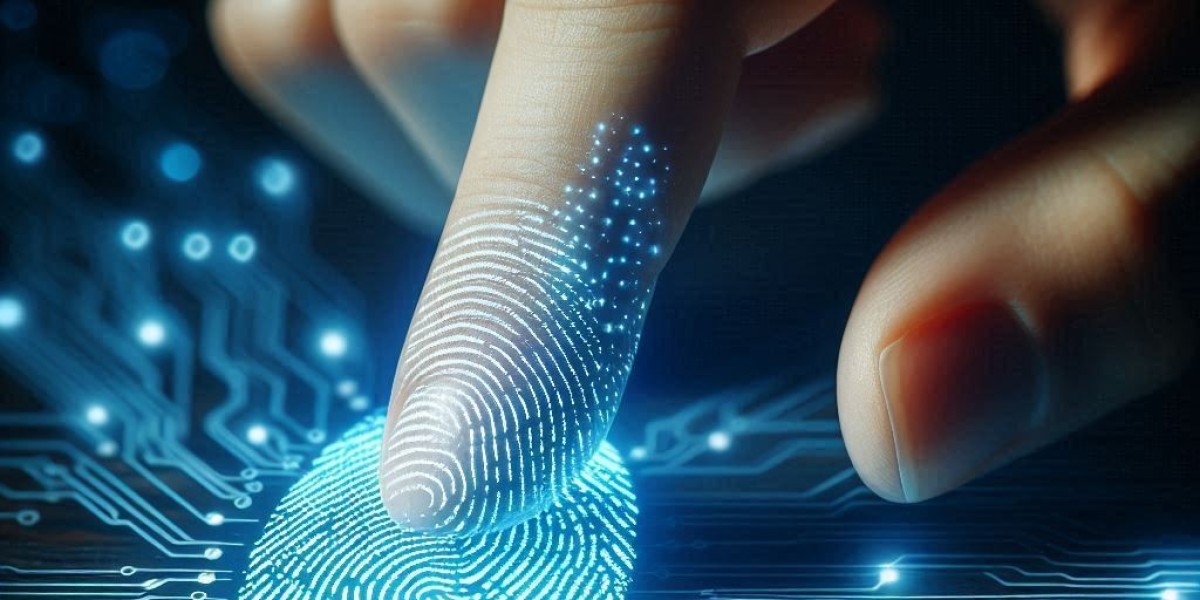In a technological age that influences almost all facets of our existence, identity verification has advanced much beyond the likes of ink-based prints. Digital fingerprint has emerged as the benchmark of secure identity authentication, with no match in terms of accuracy, speed, and worldwide connectivity. As artificial intelligence (AI) came into being, modern cloud infrastructures, and remote accessibility became a necessary demand, digital fingerprinting is on the verge of a revolution.
From jobs and immigration verification to health coverage and financial security authentication, digital fingerprinting's future is entwined with advancements in cloud storage, AI-based analytics, and remote application convenience. These technologies vow to enhance security while making it easier and accessible.
This article explores how digital fingerprint is changing, the role of AI in biometric analysis, the importance of cloud security, and how remote applications are revolutionizing the way individuals and organizations approach identity verification.
The Evolution of Digital Fingerprinting
Fingerprinting was a well-established biometric identification technique for ages. But the shift to digital fingerprinting from ink-based impressions was a technological boon. In contrast to conventional techniques, digital technology takes high-quality images of fingerprints and sends them electronically to secure repositories for instant analysis.
Advantages Compared to Conventional Fingerprinting
Increased Accuracy: Digital systems reduce smudge or incomplete print errors to a minimum.
Quicker Turnaround: Reports to agencies such as the law enforcement or immigration authorities are immediate.
Global Accessibility: Files can be transferred safely between jurisdictions and nations.
Improved Security: Secure digital transfers guard confidential information.
All of this is now being supplemented by AI, cloud computing, and remote integration, marking a new age for biometric authentication.
AI Integration in Digital Fingerprinting
Artificial intelligence is among the most revolutionary drivers of contemporary biometrics. Through processing huge databases, AI improves the speed, accuracy, and responsiveness of digital fingerprint devices.
How AI Enhances Accuracy
AI models can identify subtle variations in fingerprint patterns that may evade human analysts or legacy systems. This is particularly important when low-quality or partial prints are received.
Predictive Analysis
AI can also predict potential fingerprint capture errors, instructing technicians and even kiosks to re-capture prints prior to submission.
Fraud Detection
AI-driven systems can also identify spoofing or manipulation attempts, such as the use of artificial fingerprints. This provides an additional layer of security in financial and border control industries.
With these technologies, AI doesn't only enhance efficiency, it renders digital fingerprinting virtually foolproof.
Cloud Security and Digital Fingerprinting
One of the key changes in identity verification is the trend towards cloud-based systems. Rather than keeping fingerprints on local servers or physical storage, organizations currently use secure cloud environments.
Advantages of Integration with the Cloud
Scalability: Cloud-based systems enable governments and corporations to keep millions of records without being physically confined.
Accessibility: Authorized agencies can access fingerprint data anywhere in the world in real time.
Disaster Recovery: Cloud backups avoid loss of data due to physical damage or technical failure.
Collaboration: Shared databases facilitate inter-agency and global cooperation.
Security Considerations
Cloud systems will have to adhere to stringent cybersecurity requirements. Encryption, multi-factor authentication, and zero-trust architectures secure fingerprint data from breaches.
As cloud technologies evolve, the position of digital fingerprinting in national and international security will become ever stronger.
Remote Applications: Taking Fingerprinting out of the Office
One of the most thrilling trends in digital fingerprint is the growth of remote use. In the past, applicants needed to go to physical fingerprinting stations. Now, remote technologies are emerging to deliver convenience without sacrificing security.
Mobile Fingerprinting Devices
Handheld fingerprint readers hooked up to smartphones or tablets enable law enforcement, border patrol officers, and even employers to take fingerprints remotely.
Home-Based Applications
In the future, job, visa, or citizenship applicants can possibly employ secure in-home devices that scan and send fingerprints directly to government databases.
Remote Workforce Integration
For multinational corporations with remote employees, it provides a secure means of authenticating identity across borders, meeting global standards.
This move toward remote integration is a function of the increasing demand for ease in an increasingly connected world.
Key Sectors Affected by Digital Fingerprinting
Immigration and Citizenship
Biometric verification is the mainstay of immigration agencies across the globe. It helps to verify applicants correctly, safeguarding countries from security threats.
Law Enforcement
Police authorities utilize digital fingerprint systems to identify perpetrators in a matter of seconds, accelerating the process of investigations.
Financial Services
Banks and financial institutions incorporate fingerprint verification into customer verification systems to prevent fraud.
Hospitals and clinics are starting to employ fingerprinting to safely manage patient records and avoid identity confusion.
Work
Firms recruiting for sensitive jobs employ digital fingerprint to verify candidates' identities and carry out background checks.
Issues Confronting the Future of Digital Fingerprinting
Although digital fingerprint has infinite benefits, there are issues:
Privacy Issues: Citizens tend to fear abuse of biometric information.
Cybersecurity Threats: Hackers attacking cloud databases can end up exposing sensitive data.
Access and Cost: Developing countries might find it difficult to adopt sophisticated systems.
False Rejections: Despite AI, some errors may prove troublesome for applicants.
In order to sort these out, governments and private entities must make transparency, stringent security measures, and access their top priorities.
The Global Outlook for Digital Fingerprinting
The international biometrics market is expected to exceed $80 billion by 2027, with digital fingerprint being at the forefront. As countries cooperate in security, fingerprint information will be shared across borders more and more to fight crime, terrorism, and identity theft.
Global bodies are also looking into establishing world standards for biometric data management, with consistency, security, and equitability in fingerprint usage.
The Future Ahead: Integration and Innovation
In the future, digital fingerprint will advance in three broad ways:
More Intensive AI Integration: Platforms will become fully automated, processing millions of fingerprints at a time with virtually perfect accuracy.
Global Cloud Platforms: Governments and enterprises might embrace interconnected platforms for verification on the fly worldwide.
Remote, User-Convenient Devices: People might soon submit fingerprints from home via certified mobile or wearable devices.
The nexus of AI, cloud, and remote solutions will help digital fingerprinting become a means, not only for governments, but a standard for identity across all avenues of society.
Conclusion
The destiny of digital fingerprint is at the crossroads of innovation and security. With AI, cloud security, and remote usage, fingerprinting is more precise, accessible, and interconnected than ever.
For governments, it enhances national security. For companies, it thwarts fraud. And for individuals, it gives them peace of mind that their identity is confirmed and safeguarded.
As these technologies continue to improve, it will be a cornerstone of secure identification in a progressively digital world, serving the balance of convenience, confidence, and protection for societies across the globe.








